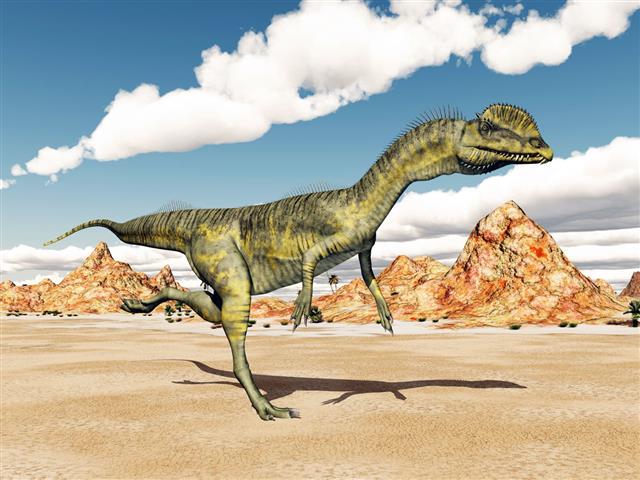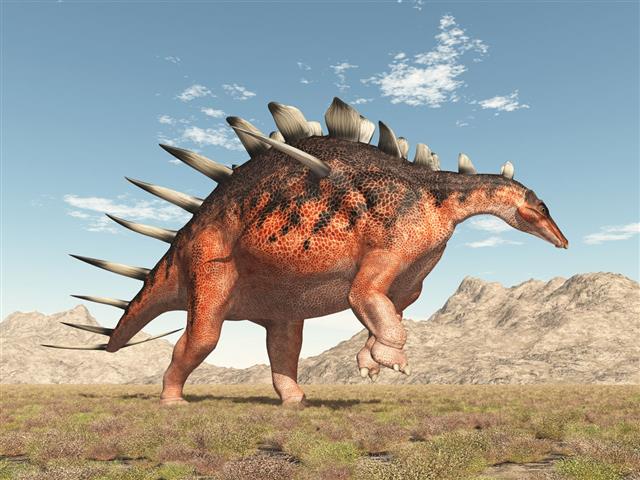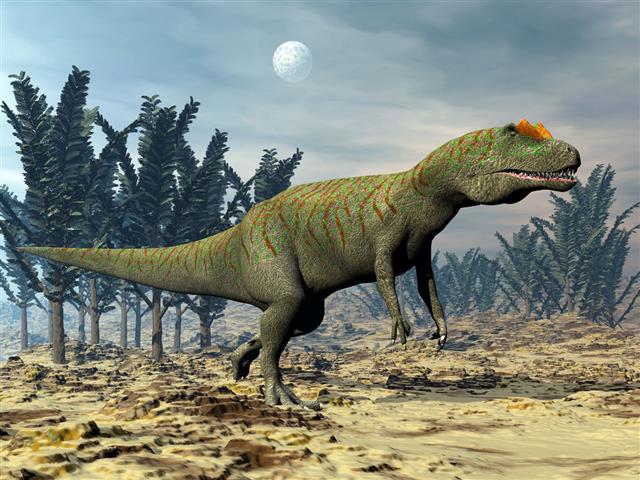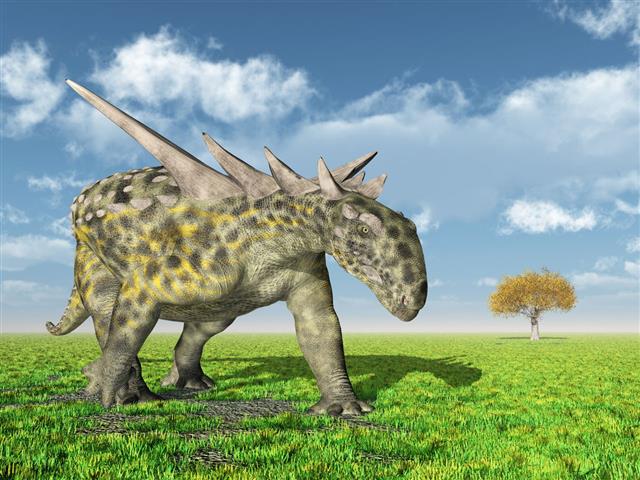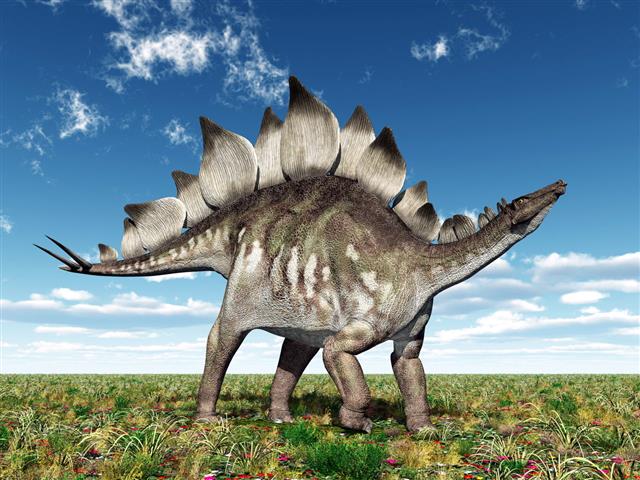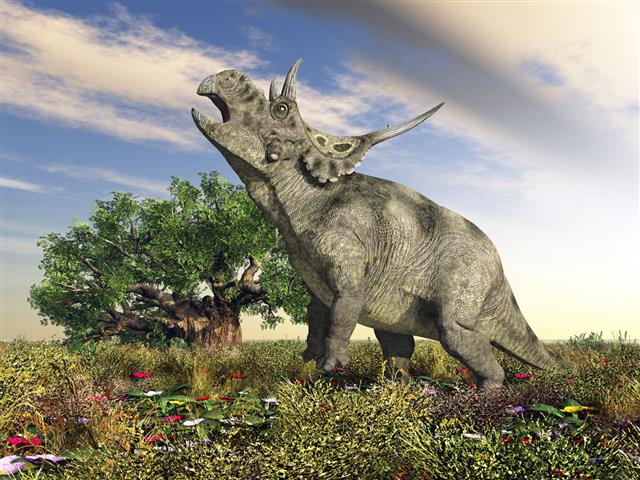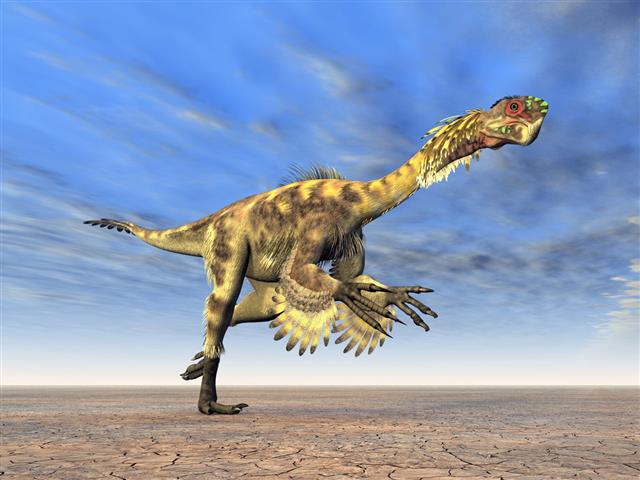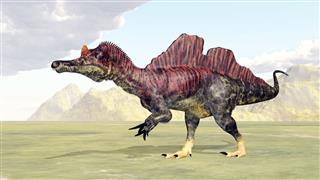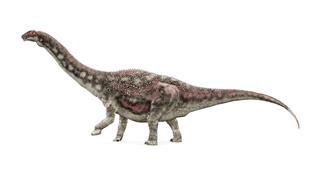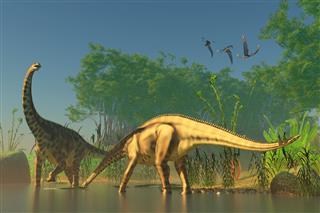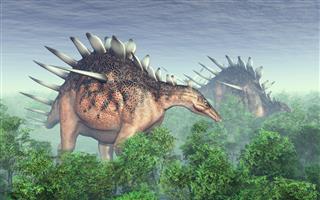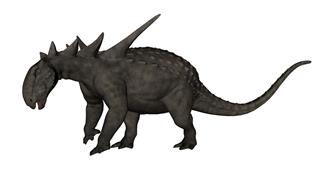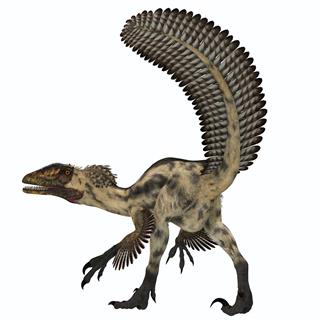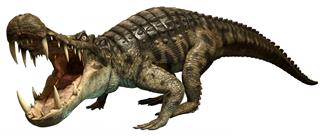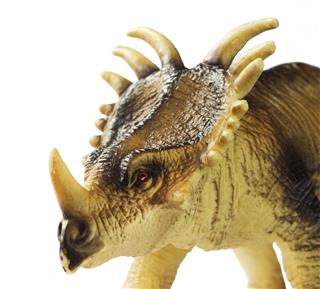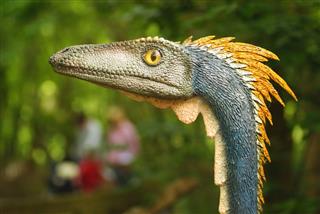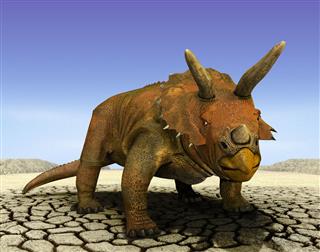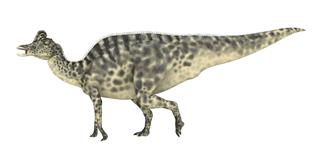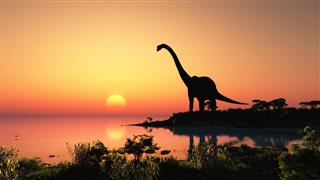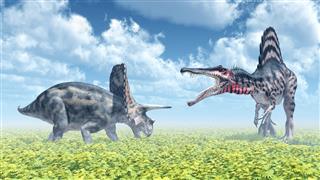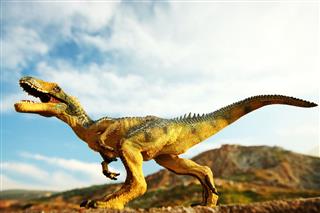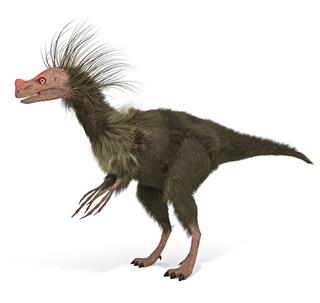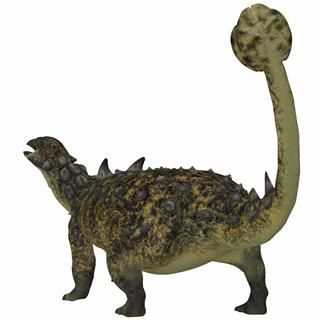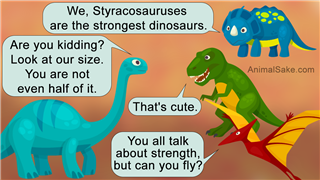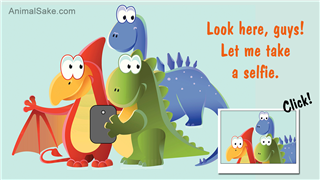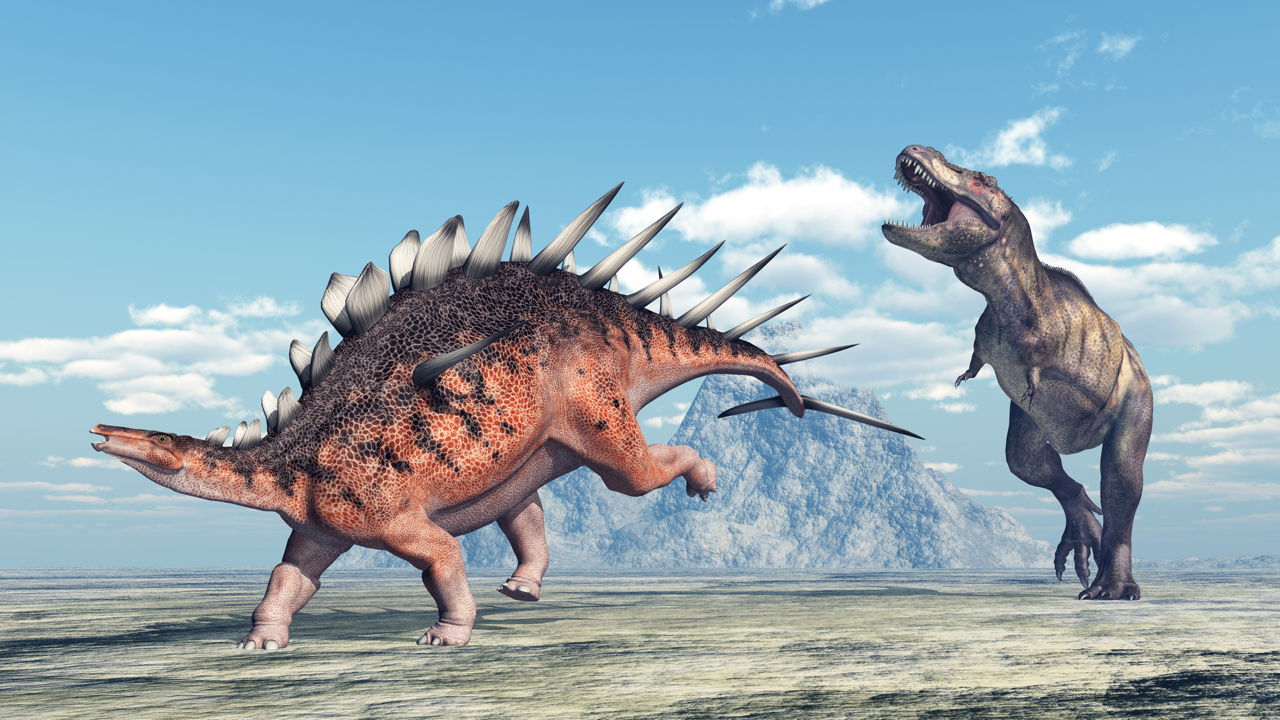
Are you interested to know about the different dinosaurs that lived on our planet before they went extinct? This article will help you know and understand the different dinosaurs who once upon a time ruled the planet Earth.
The Paleozoic Era of planet Earth, was about 542 to 248 million years ago. This era is today divided into the Cambrian, Ordovician, Silurian, Carboniferous, and Permian periods. The fish, followed by amphibians, reptiles, and mammal-like reptiles, first appeared as multicellular life forms on Earth.
The Mesozoic Era was between 248 to 65 million years ago and was followed by the Paleozoic Era. This period is again divided into Triassic, Jurassic, and Cretaceous periods.
The different types of dinosaurs that belonged to the animal group, had come into existence during the Triassic period of the Mesozic era.
Dinosaurs evolved about 230 million years ago from primitive reptiles called the archosaurs, that were known as ruling lizards during the Mesozoic era. These lizards were smaller than the dinosaurs and had features that were much different from dinosaurs.
Another theory suggests that there were therapsids, who may have been a hybrid of mammals and reptiles. These creatures could also have been the ancestors of dinosaurs. The early dinosaurs were fleet-footed bipeds. They were either meat eaters or plant eaters. These dinosaurs were about 10-15 feet in height, according to the fossil remains found on Madagascar. The bipeds evolved into quadrupeds. These mammal like creatures, i.e. the therapsids, declined rapidly with the evolution of dinosaurs.
The first birds appeared during the Jurassic period of the Mesozoic era. The size of the dinosaurs also increased during these evolutionary periods. About 65 million years ago, at the end of Mesozoic era, all dinosaurs and Pterosaurs suddenly disappeared. This end of the dino-era is known as the Cenozoic Era.
When we speak about dinosaurs, the most vivid images of these majestic creatures is created by Steven Spielberg, in the movie Jurassic Park. This movie was adapted from the fiction novel by Michael Crichton, ‘The Lost World’. People all over the world became fascinated by the creatures that once roamed freely on our planet. There were different dinosaurs that were herbivores, carnivores, and omnivores. Let us travel back in time and know more about a few facts about dinosaurs.
Dinosaurs and Their Different Types
Sir Richard Owen, the British paleontologist, defined the original taxon Dinosauria in 1842. He coined the word Dinosauria, which meant ‘fearfully great lizards’ in Greek, to refer to the group of extinct reptiles. The different types of dinosaurs were named according to the different physical features of these ‘terrible lizards’.
Dinosaurs Named According to their Physical Traits
| Dinosaurs Named According to Their Teeth | Description of Dinosaurs |
| Astrodon | Astrodon meant ‘star-tooth’. It had a long neck and was a herbivore. It was 9 meters long and lived during the Cretaceous period. This star toothed dinosaur was named by Johnston in 1859. |
| Deinodon | Deinodon means ‘terrible tooth’. This carnivore was existed during the late Cretaceous period. This dinosaur is known from only by a dozen, large, fossilized teeth and was named by paleontologist J. Leidy in 1856. |
| Heterodontosaurus | These dinosaurs had three different kinds of teeth and hence the name. They had sharp cutting front, upper teeth, the cheek teeth for grinding food and two pairs of long canine-like teeth that could fit into the sockets. Alan J. Charig and Alfred W. Crompton named this dinosaur in 1962. |
| Hypsilophodon | Hypsilophodon means ‘high-crested tooth’. This herbivore was an Ornithopod and was a fast runner. Thomas Huxley was the first to describe a Hypsilophodon, in 1870. |
| Dinosaurs Named According to Unusual Head Features | Description of Dinosaurs |
| Brachyceratops | Brachyceratops means ‘short-horn faced’. This dinosaur was a ceratopsian, i.e. a horned, scallop-frilled herbivore with a crest. It was found in the late Cretaceous period and was named in 1914, by C.W. Gilmore. |
| Homalocephale | Homalocephale means ‘level head’. It was a pachycephalosaurid, that is, thick skull dinosaur. This herbivore walked on two legs and lived during the late Cretaceous period. It was named in 1974, by paleontologists Maryanska and Osmolska. |
| Pentaceratops | Pentaceratops means ‘five-horned-face’. This herbivore had a large bony, scalloped, head frill, a snout horn, 2 large forward facing horns and 2 pointy horn-like cheek bones. It was named in 1923 by paleontologist Henry F. Osborn. |
| Triceratops | This rhinoceros-like dinosaur had one short horn above a parrot-like beak and two longer horns above its eyes. It was a late Ornithischian dinosaur, which was a bird-hipped, herbivorous dinosaur. It was named by paleontologist Othniel Marsh in 1889. |
| Dinosaurs Named According to their Feet | Description of Dinosaurs |
| Brachylophosaurus | This short crested lizard was a duck-billed dinosaur. It lived during the late Cretaceous period. It was named by paleontologist Charles M. Sternberg, in 1953. |
| Deinonychus | Deinonychus antirrhopus means ‘terrible claw’. This lightly built, fast-moving, agile, bipedal, bird-like dinosaur lived in the Cretaceous period. This carnivore was built to kill. It had an IQ that was highest among the dinosaurs and it was named by Ostrom in 1969. |
| Saltopus | Saltopus means ‘leaping foot’. This small, lightly built dinosaur was a bipedal. It had dozens of small sharp teeth and five fingers on its hand. But the fourth and fifth digits were very small. This carnivore was an insect eater and may have been a scavenger. It was named by paleontologist Friedrich von Huene, in 1910. |
| Velocipes | Velocipes means ‘speedy foot’. This carnivore was from the late Triassic period. It was also named by paleontologist Friedrich von Huene, but in 1932. |
| Dinosaurs Named According to Unusual Body Features | Description of Dinosaurs |
| Baryonyx | Baryonyx means ‘heavy claw’. This dinosaur had long claws on its hand and long and narrow crocodile-like jaws. A small crest was present on its snout. This carnivore was present during the Cretaceous period. It had a higher IQ than the other dinosaurs and was named by paleontologists Angela C. Milner and Alan J. Charig. |
| Deinocheirus | Deinocherius means ‘terrible hand’. This large, long-legged, bipedal was a carnivore. It was a Coelurosaurid ornithomimosaur theropod and was the fastest among the dinosaurs. It was named by Osmolska and Roniewicz in 1970. |
| Panoplosaurus | Panoplosaurus means ‘totally armored lizard’. It lived during the late Cretaceous period and was named by paleontologist L. Lambe, in 1917. |
| Centrosaurus | Centrosaurus means ‘pointed lizard’. It lived during the late Cretaceous period and was a herbivore. It had scalloped frills, with two hooked spikes near the center. It was also named by paleontologist L. Lambe, in 1904. |
| Dinosaurs Named After a Place | Description of Dinosaurs |
| Andesaurus | Andesaurus means ‘Andes mountain lizard’. This was a long Titanosaurid sauropod with a long neck, long tail, quadrupedal, herbivorous dinosaur. It lived during the Cretaceous period and named by Calvo and Jose Bonaparte in 1991. |
| Denversaurus | Denversaurus means ‘Denver lizard’. It was a plated, quadrupedal, herbivore and was named by Robert Bakker in 1988. |
| Lesothosaurus | Lesothosaurus means ‘lizard from Lestho, South Africa’. It was a lightly built, early dinosaur. It was an agile runner and lived from the late Triassic to the early Jurassic period. It was named by paleontologist Peter M. Galton in 1978. |
| Szechuanosaurus | Szechuanosaurus means ‘Szechuan province lizard’. This carnivore lived during the late Jurassic period. It was a Allosaurid theropod and was named in 1942. |
| Dinosaurs Named in Honor of a Person | Description of Dinosaurs |
| Drinker | Drinker was a small, herbivorous dinosaur and named in honor of paleontologist Edward Drinker Cope. This Ornithopod lived during the late Jurassic period and was named by paleontologists Bakker, Galton , Siegwarth and Fila in 1990. |
| Lambeosaurus | Lambeosaurus means ‘Lambe’s lizard’. It was a crested, duck-billed dinosaur. It had a forward-leaning, hollow, bony crest that may have been used to produce sounds, enhanced smell or for display during courtship. It lived during the Cretaceous period and was named by Dr. William A. Parks, in honor of Lawrence Lambe. |
| Othnielia | Othniella was named in honor of paleontologist Charles Othniel Marsh. It was a ornithopod with a horny beak and small skull, with self sharpening cheek teeth. It lived during the late Jurassic Period and was named by Galton in 1977. |
| Dinosaurs Named According to their Assumed Behavior | Description of Dinosaurs |
| Maiasaura | Maiasaura means ‘good mother lizard’. This was a large, duck-billed, herbivorous dinosaur. It was the first dinosaur to be found alongside its young, eggs, and nests. This should mean that it may have nurtured its offspring. It lived during the late Cretaceous period and was named by Jack R. Horner and Robert Makela in 1979. |
| Oviraptor | Oviraptor means ‘Egg Robber’. It was a bipedal carnivore that had a ‘S’ shaped neck, arms with three fingered claws, long thin legs, four toes, and clawed feet. It had a large brain compared to its body size and lived during the late Cretaceous period. It was described by Henry F. Osborn in 1924. |
Names of Dinosaurs According to their Diet
The above tables provided information on dinosaurs that were named according to some of their physical features or behavior. The following table contains names of dinosaurs based on the food they ate. This will help you name most of these extinct creatures.
| Herbivorous Dinosaurs | Carnivorous Dinosaurs |
| Agujaceratops Alamosaurus Anchiceratops Animantarx Ankylosaurus Avaceratops Brachiosaurus Camarasaurus Camptosaurus Centrosaurus Corythosaurus Diabloceratops Diplodocus |
Acrocanthosaurus Adasaurus Afrovenator Albertosaurus Alectrosaurus Alioramus Allosaurus Anchiornis Aucasaurus Bambiraptor Baryonyx Buitreraptor Carcharodontosaurus |
| Herbivorous Dinosaurs | Carnivorous Dinosaurs |
| Eotriceratops Euoplocephalus Gigantspinosaurus Giraffatitan Heterodontosaurus Hypsilophodon Iguanodon Kentrosaurus Kritosaurus Magyarosaurus Maiasaura Mamenchisaurus |
Carnotaurus Ceratosaurus Coelophysis Coelurus Compsognathus Cryolophosaurus Deinonychus Dilong Dilophosaurus Dromaeosaurus Eotyrannus Epidexipteryx |
| Herbivorous Dinosaurs | Carnivorous Dinosaurs |
| Massospondylus Nanyangosaurus Nemegtosaurus Ouranosaurus Pachyrhinosaurus Plateosaurus Prenocephale Protoceratops Psittacosaurus Riojasaurus Saichania Saltasaurus |
Giganotosaurus Gorgosaurus Guanlong Herrerasaurus Majungasaurus Megalosaurus Microraptor Rajasaurus Rugops Saltopus Scipionyx Sinornithoides |
| Herbivorous Dinosaurs | Carnivorous Dinosaurs |
| Stegosaurus Styracosaurus Talarurus Tarchia Torosaurus Trachodon Triceratops Tuojiangosaurus Ultrasaurus Unaysaurus Zalmoxes Zuniceratops |
Sinosauropteryx Spinosaurus Staurikosaurus Suchomimus Tarbosaurus Torvosaurus Troodon Tyrannosaurus rex Utahraptor Velociraptor Xiongguanlong Yangchuanosaurus |
Some of the omnivorous dinosaurs include Abrictosaurus, Avimimus, Caudipteryx, Gallimimus, Nomingia, Oviraptor philoceratops, Protarchaeopteryx, Sinovenator, Struthiomimus, etc.
These were just a few of the many types of dinosaurs that once walked on our planet. These were probably the most successful groups of animals that survived, evolved, and formed diverse living habits. Their extinction remains an enigmatic question with many hypothetical answers and theories put forward by scientists, paleontologists and researchers.
The mass extinction of dinosaurs marked an end of ‘Age of Dinosaurs’ and paved way for the ‘Age of Mammals’. Whatever the reason, it is a game of ‘survival of the fittest’ and dinosaurs seemed to have lost the race, due to some unexplained phenomenon. Dinosaurs have always fascinated the survivors in the line of evolution.
